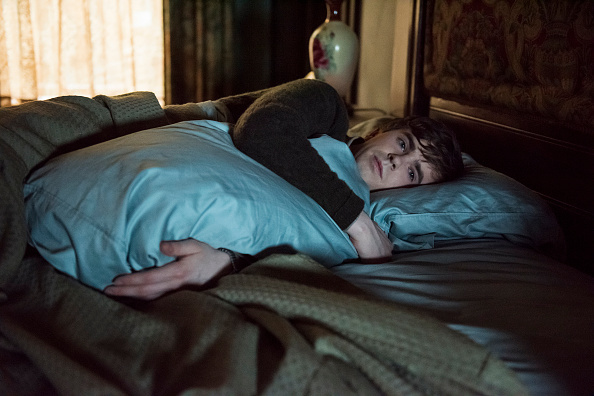A few weeks ago, a New York City art therapy nonprofit made a major announcement at their 5th Anniversary Celebration—they were changing their name. The former Art Therapy Outreach Center is now The Art Therapy Project. It was more than just a name change, but a symbol of the organization’s ongoing initiative to provide free art therapy to trauma survivors around the city. I got the chance to sit down with two of the organization’s spearheads, Executive Director Martha Dorn and Clinical Director Samantha Commarato (MPS, ATR-BC, LCAT, ATCS). A dynamic duo as vibrant as the art they inspire, they took me through the stages of the organization’s growth, the importance of qualitative data, and the joys of seeing healing and progress through the stroke of a brush.
Kaila: What are some of the rewards that you’ve experienced from working in nonprofits, and how did you get into the field?
Martha: I got into nonprofit [work] 30 years ago, quite by accident. I had been working for the governing body of Men’s Professional Tennis, organizing tennis tournaments, and dealing with sponsorship and all of that. I loved it, and it was wonderful, [but] at the end of the day, I thought, ‘Why am I doing this to sell cookies?’ (Because their big sponsor is [a cookie company]).
I absolutely by chance had a job interview with the New York chapter of the National Multiple Sclerosis Society, and they were looking for an events person. They took a risk with me because they thought I understood intuitively about fundraising, and that’s how I got into it. It was through events, but there is something a lot more satisfying to put together an event where the outcome is going to benefit others. I would say all along, I have always worked for nonprofits that are focused on improving the quality of life.
Kaila: And what about you, Sam?
Samantha: I actually started my training in art therapy almost 20 years ago—it’s 19 years I think, this year. I did this undergraduate certificate training along with my major and my minor, and then took a year to work in the field. 6 months in, I was sort of sold. Then I came back, I got my master’s, and I’ve been working with groups and families ever since.
Kaila: What led you specifically to The Art Therapy Project?
Samantha: I was working in a hospital-based psychiatric program for adolescents for about 10 years, and in that time, I heard about Art Therapy Outreach through some contacts from the graduate art therapy department where I had gone to school. I heard about this group that was possible, and they were looking for someone to facilitate adolescents at Mount Sinai. I thought, ‘I would love to do that! I’m going to try!’ So I did. That’s how I met Martha and that’s how I got involved with, then, Art Therapy Outreach Center. I did that group for two years before juggling many things, and the workload just got to be too big. Then I stepped out for a period of time, and it was just over a year ago that I came back as the Clinical Director.
Kaila: What made you come back?
Samantha: Well, how long do you have? It had to do with Martha, obviously. I think that this organization is really unique. It’s impossible to find an organization that is focused on what I do. I really like that there are so many other opportunities here for the clients that aren’t offered elsewhere. For example, really specific, tailored groups, materials and processes to meet those needs. Our independent contractor art therapists have the freedom and the ability to do that, and to make clinical decisions that are best for the client. The focus on the client continues by the offering of exhibitions and field outings to museums when there are exhibits that are relevant. I just think that the focus on the client is the thing that stands out the most about this organization.
Kaila: I like how you have “clients” instead of “patients.” Could you discuss that terminology?
Samantha: As art therapists, we believe that the individuals we serve are healthy. They have healthy components, [and] everybody has the internal resources they need to make progress. Sometimes it’s just a question of identifying them or strengthening them. The role differential of, ‘I’m the therapist and you’re the patient,’ implies illness or inability.
Martha: That’s why we talk about mental health, not mental illness.
Kaila: A very important distinction. Now I want to go a bit more personal. Do either of you have a personal connection to individuals who have experienced trauma? Why is that so compelling for you both?
Martha: I think that in this day and age, you’d be hard-pressed to find an individual who doesn’t have some kind of connection to people who have experienced trauma, you know, on a general level. It can be something as basic as anyone who lived in New York on September 11th.
Samantha: Of course. I don’t think that it has motivated my direction in terms of profession, but I think that art-making has always been something that I’ve used as a form of expression, or as a form of sorting things out in my own life, ever since I was a kid. I understand the power that it has. So I feel that it’s the best tool that I have to be able to help other people to accomplish similar things. That’s my goal.
Kaila: Why art? Could you speak to how art therapy specifically works for trauma patients?
Samantha: I think the way art therapy works depends on the individual. The symbolic imagery that comes out when people create artwork might not even be recognizable to the client as anything significant, or anything that matters. But when you start putting together fragments, and you see things in a series over time, you can see what kinds of patterns might emerge or what kind of progress might be happening based on the formal elements you’re looking at.
When people experience a trauma, their brains don’t store memories in the same way. It’s a really sensory-based storage, and there are fragments that are connected to sensory experiences. If there’s a sound happening while someone is experiencing an assault—there’s a train, maybe, that’s going by—that sound could potentially create flashback, or recollections of the event. When people are able to express things symbolically, they can start establishing greater connections, and then attach language and words to the experience. Because a lot of the time, [a trauma] is not linear and there aren’t words associated with it. Part of what we do is help people organize [their thoughts] and learn to talk about the experience, so they can process it on that higher level and integrate it into their overall life experience. The trauma will never be erased; it will never be fixed, or eliminated. It happened. But finding a way to frame it within the narrative of your life experience so that somehow it’s integrated all the time, that would be the goal.
Kaila: I noticed at the [5th Anniversary] event, some clients wrote their stories in their artist statements and some refrained. Do you find that some clients still have trouble accessing that verbal stage?
Samantha: Sometimes defenses are working and doing their job, but [there is] too much to be processed. Some people are earlier in their process, [and others] might be in treatment for a longer period of time, but may still not be at a place where somebody else might be.
Martha: We don’t set a time or a number of session limit. For as long as a client wants to be with us, they are with us. We’ve had clients that have been with us and have left, [then] come back for that little refresher. We have clients call us that haven’t been around for awhile and say they recognize their thoughts are disorganized again, or they’ve continued making art, [but it’s] not as organized as it had been, and could they come back to us. ‘That’s great, come back.’ About a third of our clients are ongoing.
Samantha: With the absence of language, it’s important to understand that sometimes [what] comes out in creative expression is not conscious. Sometimes things might be obvious or apparent to someone else observing, even fellow group members, but that person may not be aware of what might be sitting there on the canvas. It’s another example [of how] everybody in their own time develops the insights necessary to make progress.
An art therapist could guide a person in a direction where they might continue to make art that might help them develop that insight, but never with an interpretation. Never a, ‘Hey, did you notice there’s a really huge frowning face in the flowers?’ The defenses are working and they need to be there. They serve a purpose.
Kaila: Now I want to get into the day-to-day life. I know obviously, you guys are both super busy. Could you take me through a typical day?
Martha: A typical day starts off, I would say,—
Samantha: With coffee!
Martha: With coffee, yes! Iced or hot, depending on the weather. That would be for both of us— always the extra large, tall, variety. We definitely touch base with one another to either address whatever has popped up since we last saw one another, or prep for anything that’s upcoming. I might have a call or a meeting with volunteers, with committee members, for either an event or our marketing committee, for example. While I’m doing that, Sam might be—
Samantha: Usually talking with partners, troubleshooting challenges or organizing a new group, and supervision with art therapists. I facilitate groups as well out in the field. While all this is going on, there are, during the week, 27 groups running in all different places.
Martha: This is your typical day. Not one where you might have inclement weather, which definitely sends us into action mode! Then, I might have a meeting with a donor or with a potential donor, and Sam and I might be meeting with someone in the studio if the studio is available, and we’ll talk about what we do, how we do it, how we’re structured and all that. If a person wants to talk about how they might get involved, we can go through that.
Samantha: There’s always data. Everyday there’s data. Reviewing the up-to-date statistics, whether it’s outcomes or how we’re doing on census [or] with budgeted materials, [too].
Martha: Which then I will translate into stats for the grant I am writing, and checking the budget (because I handle all the finance part of it as well). Then of course a volunteer has wandered in during that time [with] thank you notes that need to be signed and others are working on social media for us. Every social media posting has to be reviewed before it gets posted. Then Sam is surrounded by art supplies.
Samantha: Lots of art materials, and lots of art material donations, which then leads to lots of time spent in the studio while emailing on my phone. We have all these new materials that need to be integrated or packed up for art therapists to take with them. And so, a total reorganization of space.
Martha: Then the consents from our clients have to be filed because, as you know, we follow all HIPPA guidelines. Then it’s probably time for me to get together with one of the Young Professionals to talk about what they’re going to be doing for us.
Did we forget lunch?
Samantha: Sometimes we have lunch!
Martha: There is also an afternoon coffee run. Then I might go off to some workshops and Sam will run a group, and then it’s 8:00 at night. Then, we’re attempting not to look at our emails until 6 the following morning.
Kaila: It has to be done!
Martha: We are a very lean machine, so to speak, though there’s nothing about us that’s machine-like. We are 3 full-time staff members: myself, Sam and Ahn Hee [Strain], who is our full-time art therapist.
Samantha: I think we have 8 ongoing art therapists and then there are 3 or 4 other art therapists that do short-term groups and things like that.
Martha: I also work with the board very closely and we’re up to 8 members. We have 2 student workers that are provided to us from the School of Visual Arts.
Kaila: It’s not a lot on hand all the time. It surprises me, considering the amount of clients you have, that you operate in such a small group.
Martha: We direct all of our funding to programs. We’re just celebrating 5 years and the board has covered our admin costs in our early years, so everything the outside world is donating to us is going directly to programs. One of the reasons we brought in a full-time art therapist was because we are running so many groups and providing so many services, that it got to the point where frankly, it was more cost-effective for us to have someone on staff. This year, we don’t know what our final count will be for the number of clients we’ve worked with, but we know as of this week we’re at, what, 1,050?
Samantha: 1,051.
Martha: 1,051 or thereabouts, so clearly we will exceed last year’s program of 1,077. If you were to ask our founder and chairman, David Wasserman, ultimately the goal is always to help as many people as we possibly can. That’s what we’re all trying to do.
Kaila : I’m really interested in the client on-boarding process. How does someone who has experienced trauma know that art therapy is an option? How do they find out about you?
Samantha: Most of the time, people who are learning about art therapy are typically involved already with an organization or know someone who knows about art therapy. We’re much more well-known now in terms of an option for mental health treatment, but it usually comes from working with someone who suggests it to the client.
The majority of our clients are already affiliated with one of the program partners. They’re already receiving services, whether it’s from the V.A. or they’re on a unit in a hospital, or they’re already enrolled in outpatient treatment or individual therapy. Then, the recommendation comes from the clinical staff based on what [they] understand about the person and feel might benefit. When we do a group at a site, the site is responsible for screening and identifying needs, and then if the art therapist identifies different needs and disagrees, that’s a conversation that happens with the site, to make sure that everyone in the group is appropriate.
Kaila: Have you experienced anyone not taking to art therapy?
Samantha: Sometimes people have experienced a trauma, [have] done a lot of processing, [have] been in individual therapy, and it seems like a good time to start working on decreasing isolation and get into a groove and develop some relationships. Maybe that person gets to that group, and they feel like they’re ready for it. [Then,] they get there and it’s overwhelming. Or certain interpersonal difficulties that that person has interferes with their ability to participate effectively in a group. Then, that information gets taken back to the individual therapist, so the client who may not continue with group, will continue to receive the services they were receiving.
Group therapy is not for everyone. Group therapy has a very specific purpose [and is] a very specific model of treatment. It is important for the safety of all of the members of the group that everybody be ready and appropriate for the setting.
Kaila: Is art therapy only a complementary therapy?
Samantha: Not necessarily. Art therapy is based on application of traditional psychotherapeutic theory. It can be adjunctive, and sometimes it is. I think a lot of the time that’s people’s understanding—that it’s sort of this ‘add on,’—but it’s not. It’s therapy. It’s therapy with art.
Kaila: Are you doing any active research studies? This category of therapy is given a lot less research attention than CBT, for example. What research informs your art curriculum?
Samantha: Right now, we’re looking at short-term impact of art therapy sessions [through] self-report outcomes. We’re looking at the youth and adolescent populations over the 90-minute period of time. We do a simple Likert scale, 0 to 10. The kids rate [themselves] at the beginning and then at the end, and it’s on average about a 16% increase [in feelings of confidence and overall outlook]. We have one [assessment] that [includes] 5 questions that every single person who does an evaluation here answers. Then, substance abuse has there own specific mini subset, and we have one specific to the overall trauma category. We’re able to identify certain symptoms that would be associated with those populations, so that we can measure [outcomes]. Right now, it’s all self-report, but we would like to do more research with quantitative data about the impact of art therapy on specific symptoms.
Kaila: There’s a lot of qualitative benefit, I’m sure, that you can see in the field all the time.
Samantha: Quantitative data is great, and it does support a field and improve reputation, but at the same time, the client experience is what we are focused on. That’s what we care about. When the clients come to group and they’re able to say, ‘I feel so much more relaxed, I think I can actually go home and get my work done,’ that to me [means] we’ve done our job today.
Martha: When the weather’s horrible, if we actually get anyone showing up, that is something, These are people who are so self-isolated that the mere threat of a thunderstorm can bring back memories. So sometimes just getting people to group is an accomplishment.
Samantha: For some people it’s learning how to ask for what you need. Maybe you come from a family environment where you took what was given, and that’s it; you don’t ask for more. They come in one day and say, ‘You know, I was really thinking about doing something with needlepoint. Do you think that we could maybe get some needlepoint materials?’ That’s amazing.
Martha: And the answer is, ‘Yes, we can!’
Samantha: Those are the things that are really hard to measure, which is a big part of why we developed the assessments the way that we did. There’s blank space on the assessments and each client has the ability to fill in four lines with personal goals. In terms of measurement, I don’t know, but the art therapist knows what that client’s individual goals are, and that client and the art therapist are assessing those every few months, in intervals. That’s really, to me, where all the proof is.
Kaila: What do you think is the biggest misconception about art therapy? What would you say that people should know about art therapy that they don’t?
Samantha: I think people should know that it can stand alone. That can be your therapy. It’s not relaxing art time, it’s not making stuff so you can de-stress, it’s therapy. I also think people have this misunderstanding about directives and what kind of art is done in the sessions. It’s as individualized as any therapy session. Someone may need the support of something like a directive. Maybe they don’t have a really strong sense of initiative yet for any number of reasons, so sitting in front of a blank sheet of paper [seems] ridiculous.
Other people come in and they’re already accomplished painters or sculptors and know where they’re going. I think sometimes people view it as this ‘class’ where everyone’s working on the same thing, and it seems kind of young and infantilizing, and it’s not like that. It’s about exploring your own unique process and how that relates to how you experience the rest of the world.
Kaila: What are some of the obstacles you’ve run into so far, and how do you plan to combat those in the future? Now with the rebranding of The Art Therapy Project, what are your goals for the organization?
Martha: 5 years ago, we needed to say, ‘Hello, World. Here we are. This is who we are; this is what we do.’ We’ve done a really good job doing that. The scope of what we want to do is broader, so the name, The Art Therapy Project reflects how what we’re doing is a collaboration. We’re collaborating with our program partners, it’s a collaboration between our art therapists and our clients, it’s all ongoing. There’s no beginning; there’s no end. It’s not about us. It’s not about a place. We have stories to tell and we know what we want to accomplish.
The one thing that holds us back is funding. It is purely that simple. We have a dozen organizations on the wait list. 5 years ago, I was knocking on doors and not getting phone messages returned; that is no longer the case. Absolutely people take our calls, and not only that, but they call us! Sam is in this position now where she takes all the information from a potential program partner, we figure out if it’s going to be a good fit, and then she waits patiently while we try to raise the money to make it happen. I think the fact that these couple dozen program partners we have now have come to us to say, ‘We want to do more with you,’ is indicative that they know their clients are benefiting. Our goal is not necessarily to have endless program partners—yes, we want to have tons of program partners—but, we want quality programming.
People have asked if we’re going to branch outside of New York, [but] we’re not even close to being done with New York.










